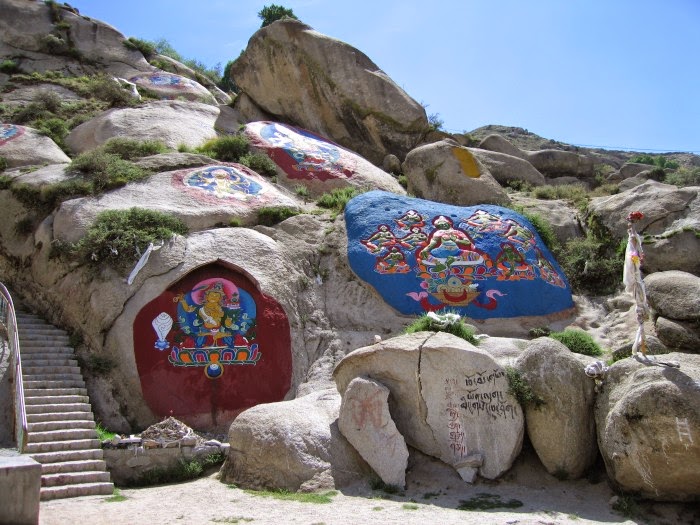Sera Monastery
Sera Monastery
http://www.greatnepaltravels.com/sera-monastery.htmlThe origin of the name 'Sera' is attributed to a fact that the site where the monastery was built was surrounded by wild roses in bloom. The original Sera monastery is located in Lhasa, Tibet, about 5 kilometres (3.1 mi) north of the Jokang and is responsible for some 19 hermitages, including four nunneries, which are all located in the foot hills north of Lhasa. The Sera Monastery, as a complex of structures with the Great Assembly Hall and three colleges, was founded in 1419 by Jamchen Chojey of Sakya Yeshe of Zel Gungtang (1355-1435), a disciple of Tsongkhapa.
During the 1959 revolt in Lhasa, Sera monastery suffered severe damage, with its colleges destroyed and hundreds of monks killed. After the Dalai Lama took asylum in India, many of the monks of the Sera Monastery who survived the attack moved to Bylakuppe in Mysore, India. After initial tribulations, they established a parallel Sera Monastery with Sera Me and Sera Je colleges and a Great Assembly Hall on similar lines to the original monastery, with help from the Government of India. There are now 3,000 or more monks living in Sera, India and this community has also spread its missionary activities to several countries by establishing Dharma centres, propagating knowledge of Buddhism.
The Sera Monastery in Tibet and its counterpart in Mysore, India are the best locations to witness the "Monk Debates" on the teachings of Buddha and the philosophy of Buddhism. Sera Monastery developed over the centuries as a renowned place of scholarly learning, training hundreds of scholars, many of whom have attained fame in the Buddhist nations.
The monastery complex, encompassing 28 acres (11 ha) of land, housed several institutions in its precincts. The structures of notability were the Coqen Hall Tsokchen (Great Assembly Hall), the three Zhacangs (colleges) and Kamcun (dormitory) also called Homdong Kangtsang. In the main hall, scriptures (scripted with gold powder), statues, scent cloth and murals were seen in profusion. The descriptions given here relate to the scenario that existed at the monastery prior to the 1959 invasion by China but most of the monasteries are stated to be since restored, though the strength of the monks are said to be small.



Comments
Post a Comment